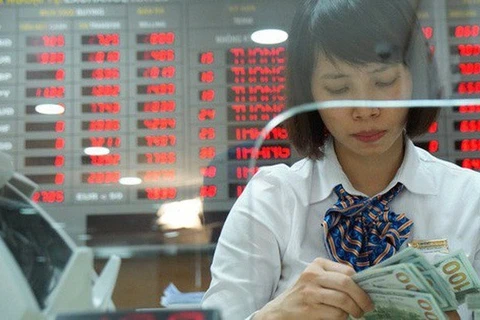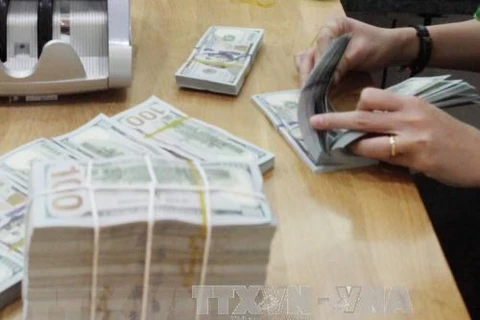Hanoi (VNA) – The foreign exchange market in Vietnam has heated up recently when the daily reference exchange rate set by the State Bank of Vietnam (SBV) continuously climbed to new record levels and the VND/USD rates listed at commercial banks also surged.
* Why did the exchange rate rise?
The SBV attributed the recent increases in the VND/USD exchange rate to negative information on the US-China trade negotiations which intensified concerns about the possibility of international trade disputes. At the same time, the devaluation of the Chinese yuan since the end of April also made psychological impacts on the domestic forex market, putting more pressure on the foreign exchange rate.
Experts were also of the view that the rise in the exchange rate was mainly caused by the psychological factor amidst new developments in the international market. Analysts of the Bao Viet Securities Company (BVSC) said the recent fluctuations in the foreign exchange rate mainly stemmed from the changes in strong currencies such as the US dollar, Chinese yuan, British pound and Japanese yen. Since the US-China trade tensions began to intensify again, the Chinese yuan has greatly depreciated, causing pressure on the Vietnam dong.
However, the SBV seems to have enough experience in dealing with the situation as the domestic forex market has been under constant influence from outside factors over the past three years. The SBV has always issued timely messages on its abundant reserves and readiness to interfere when necessary to keep the market stable.
It is the same scenario this time. After the SBV announced that it is ready to sell foreign currencies at suitable rates to stabilize the market, the forex market has cooled down and the VND/USD exchange rate at commercial banks was immediately reined in.
As of May 29, the daily reference exchange rate was up 236 VND compared to the rate at the beginning of the year, or about 1 percent. Meanwhile, the rates listed at commercial banks only rose by around 0.8 percent.
*Two useful tools to keep exchange rate under control
The management of the exchange rate during the past several years was said to be an outstanding success of the banking sector. It is easy to notice the positive impacts on the market made by the daily adjustment of the reference exchange rate and the abundant foreign reserves, which enhanced the market’s trust in the management agency.
Financial-banking expert Nguyen Tri Hieu said the daily adjustment of the reference exchange rate and the abundant foreign reserves are the two useful tools for the SBV to maintain a stable exchange rate and the value of the domestic currency.
Increasing the national foreign reserves is among annual tasks of the SBV. Though no specific figures are made public, the SBV said in a report submitted to the National Assembly recently that it had raised the national foreign reserves to the highest level ever.
According to BVSC experts, such factors as abundant foreign reserves, a surplus in the national payment balance, and the policy on tightening lending in foreign currencies and shifting to foreign currency trading, would limit risks to the foreign exchange rate in the remaining of 2019.
From another aspect, financial-banking expert Can Van Luc said the USD is only one of the 8 currencies under the daily management of the SBV, and the exchange rate policy has been very flexible since 2016, which helped keep the exchange rate stable for the past three years. Therefore, the recent rise of the exchange rate recently does not call for big concern.
Nevertheless, experts shared the view that there are still more risks ahead, as the US-China trade tension has not shown signs of ease.
Hieu urged the SBV to be more flexible and continue to utilize the two tools to stabilize the exchange rate, adding that the rate could be adjusted within a trading band of 3 percent this year.–VNA
VNA
























